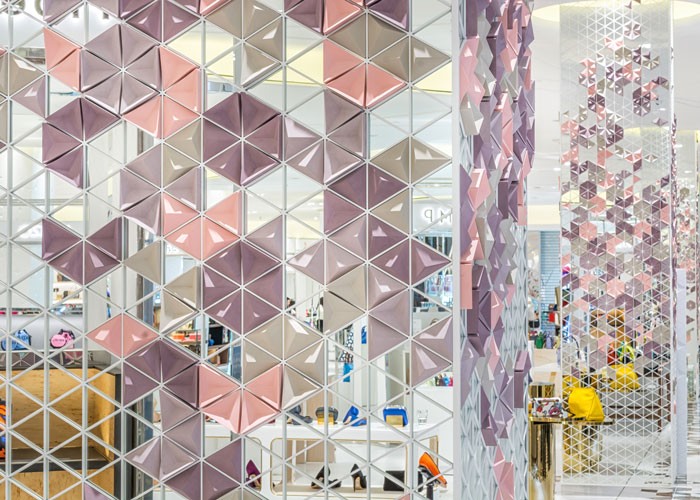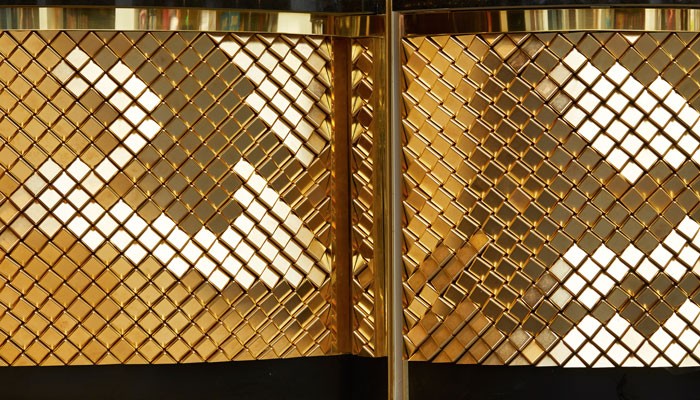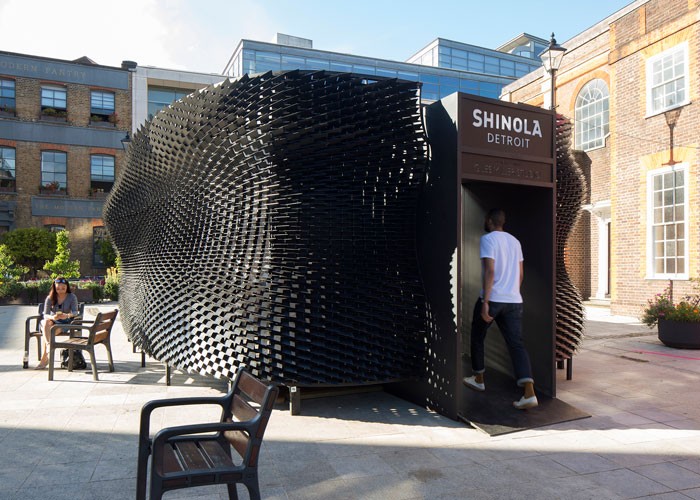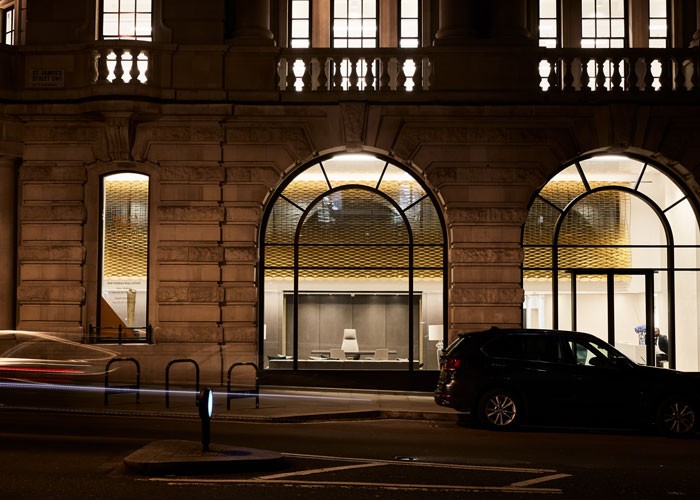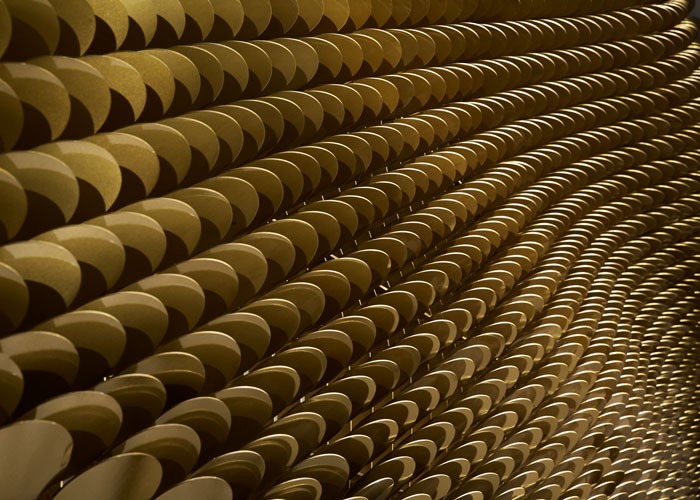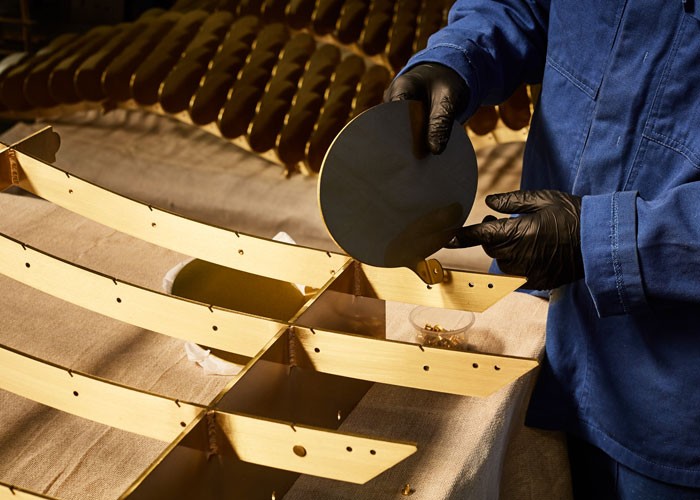A conversation between Jim Biddulph & Giles Miller Studio
A self proclaimed “composer of materials,” designer Giles Miller has experimented and worked with an enormous range; from ceramic to metal, cardboard to cork, wood to silicon and fabric to Jesmonite. But without doubt, the most consistent constituent of his practice, and at the same time most unique and intangible, is light.
His fascination of the relationship between light and materials began during his BA Furniture Design at Loughborough University when cutting, layering and manipulating corrugated cardboard. Having already caught the attention of the design world with his graduate collection, he followed it up immediately with an MA in Design Products at London’s Royal College of Art, where he was challenged to expand and define his practice further.
What has followed is a trail of experimentation and development that continually encompasses evermore materials, with both hand crafted techniques and digitally aided design, creating inimitable surfaces that reflect, distort, control and manipulate light. As a result, Giles Miller Studio has created acclaimed and award-winning work for some of the world’s most prestigious brand names across a variety of industries, including Harrods, Stella McCartney, Omega & Tiffanys, as well as large scale projects for lesser known clients who want something special.
I caught up with Giles to find out more about how the studio creates new work, including plans for next months London Design Festival.
JB: From a BA in furniture design to corrugated cardboard innovation, to surface design and now architecture, it’s been an ever changing and developing path – can you tell me more about that journey? Has the way you think and work changed along the way?
GM: It was a gradual process for me and some commissions started coming in during my time at the RCA. In fact I sold some early products including cardboard clocks and a ‘Queens Head’ Mirror to fund the social side of studying! The business formerly kicked off in September of 2011.
The creative process for our studio is one that only came about after letting go of aspirations and expectations… when I finally let the work take itself off in its own direction there quickly emerged a system of development that transcended mediums and scales. One concept catalyzes another and we are now working on projects that range from micro-engineered sculptural wall art to full-scale architecture. I’m very much enjoying being able to apply the studio’s thinking to such a diverse range of output.
JB: Having created work across a breath of fields, do you see the studio as being more one than the other now?
GM: Well we enjoy the range – sculpture and architecture are the next natural applications for our surface thinking, and so the three are interrelated. Surface experimentation is the foundation to all our output, but when it starts without expectations; a new experimental sculptural project, for example, can lead to a new way to question the material definition of space, i.e. architectural work.
JB: You’ve seemingly always had an interest in light and geometry, something you might normally say of a mathematician or physicist. Why do you think this is something that’s stuck within your practice?
GM: It took some time to recognize and define the studio’s interest in light and geometry, but the interest started at the very beginning with experimenting with corrugated cardboard. Cutting into the corrugation at different angles enabled a manipulation of tone, and so began an interrogation of how many ways I could find to manipulate light using the materials available. This process has evolved over time and now, broadly but simply, Giles Miller Studio believes in enriching the way we experience our surroundings.
JB: Your designs are always enticing and offer the user the excitement of change and transformation. How much does the user and their engagement with the end result play-out in your mind when designing?
GM: The user has become an increasingly important focus for us during the design and experimentation process. Our primary consideration within our work is the context, and I would include the user in that context. A person moves around a piece, or is affected by it. Light plays its part also, and it is the surrounding elements that not only inform our designs but also that can control and characterize the piece once it has been realised in a certain space.
JB: You’ve continued to experiment and play with your designs, and notably with the materials you choose. How do you approach material selection?
GM: Our material choices are often led by our collaborators i.e. our clients. We enjoy working together and allowing a client’s aspirations or character to steer our process. New materials are also something we play with and constantly look for as a means to test new sculptural systems, particularly with regards to their relationship with light. Every material, be it porous, reflective, colorful, bland, absorptive can bring a very distinctive character to our work, and so its important to us to ensure we keep hunting.
JB: This month Design Insider Live is focusing on cork, a material you have introduced to the angled hexagonal Alexander tile range. Is there any special reason for this?
GM: Our focus so far has been on light and its relationship with materials and geometry, and so we decided to introduce a consideration for sound. Cork is not only a natural material but also it has fantastic acoustic properties and so it seemed natural to start with cork when looking to consider sound in our surface work. The first batch of cork tiles has been delivered and we’re keen to expand on our use of the material in the coming months.
JB: One of your most recent projects, The Veil, is your largest indoor installation to date and is incredibly ambitious due to it’s scale and intricate production methods as well as the resulting visual effect. Can you tell me a little more about it?
GM: At first glance, the piece appears to be purely aesthetic, bringing character and depth to the space below – but in fact the sculpture hides a mezzanine level office, bringing privacy to the inhabitants by way of its composition.
The 3200 brass pieces were laser cut and then individually machine-bent before being slotted into the vertical contoured ‘ribs’ that make up the undulating shape of The Veil. We are delighted that the client took the risk and pushed us to create something that went beyond sculpture into something that functioned so well for the space on multiple levels.
JB: Knowing the studios history of creating installations at the big UK design fairs, and with London Design Festival now on the horizon, do you have any plans afoot – will there be any new work for our readers to visit during the fair?
GM: Yes there will! We’re working with our neighbours Aldworth James & Bondon to create an immersive large-scale sculptural structure for South East Makers Club. This year the show is focused in Deptford where we have our studio, so we jumped at the chance to be involved again. Byplace will be a timber structure that plays on density and perspective, located on the Grade 2 listed Carriage Ramp in Deptford Market Yard. Working in such a collaborative way has enabled us to evolve our thinking in the area of architecture and continue to question how space can be physically defined, so we’re really excited to see Byplace installed in our local neighbourhood.
For more information about Giles Miller Studio, visit their website.
Don’t forget to keep your eyes peeled for our post-show report for the London Design Festival, which takes place between 15-23rd September 2018.





